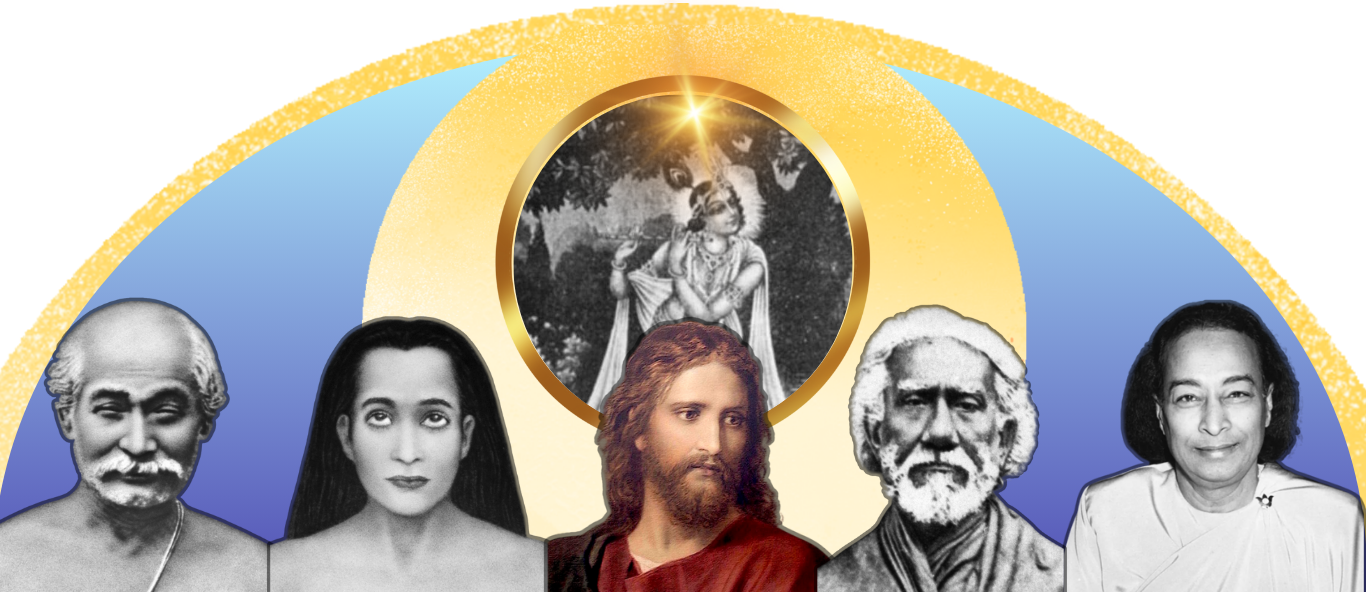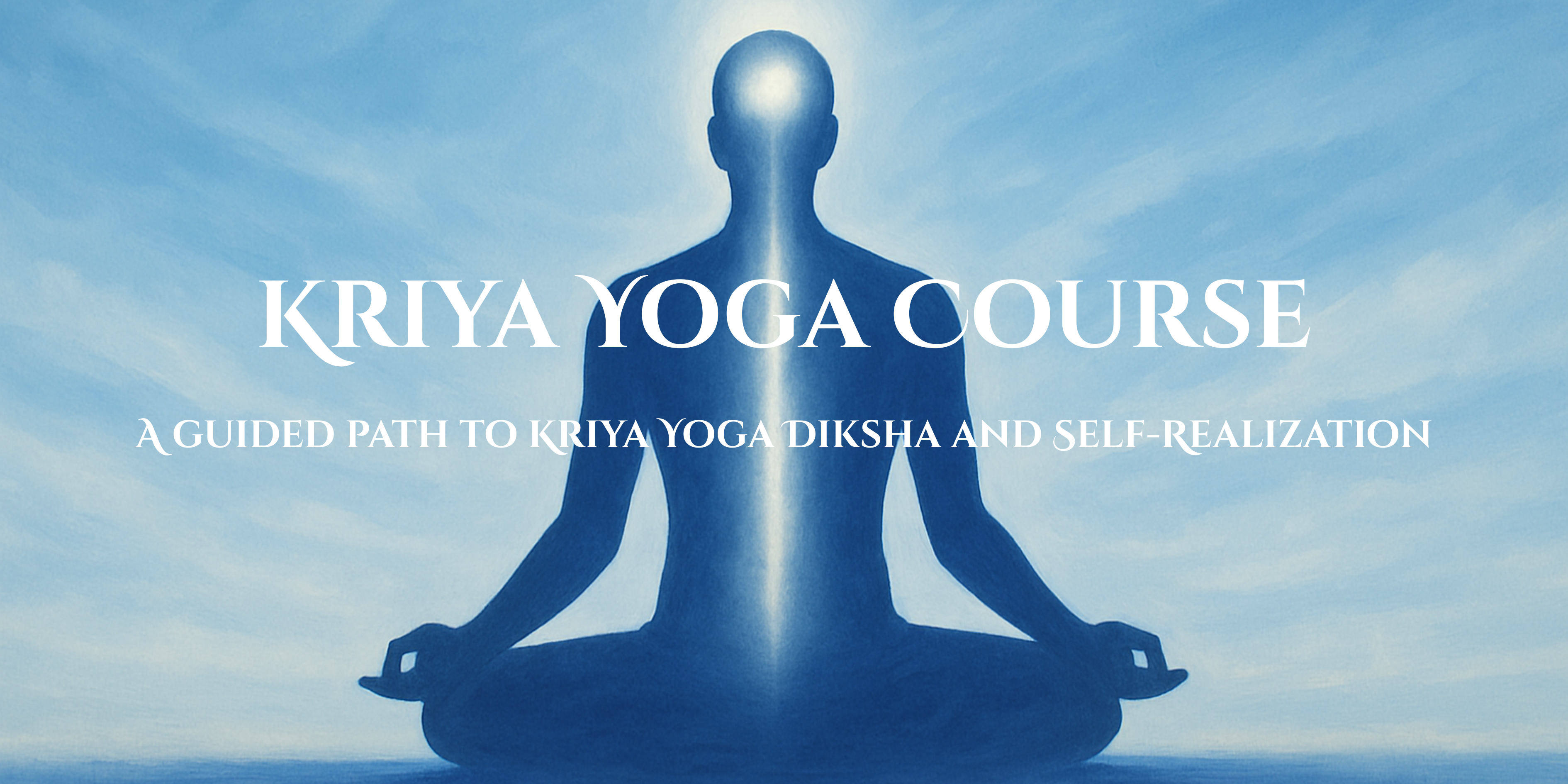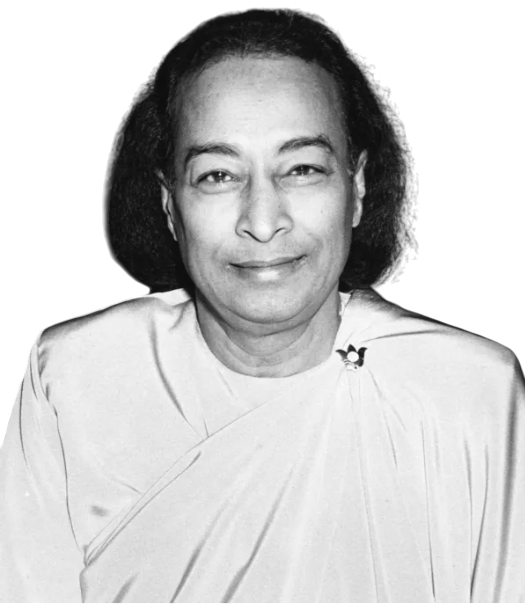Kriya Yoga For Self Realization
As Taught by Paramhansa Yoganada

“The science of Kriya Yoga is eternal. It is true like mathematics, like the simple rules of addition and subtraction, the law of Kriya can never be destroyed.”
– Autobiography of a Yogi, by Paramhansa Yogananda
Kriya Yoga is a sacred pathway to Self-realization.
Through YogiEvolve, experience authentic guidance from Paramhansa Yogananda’s teachings.
What is Kriya Yoga?
Kriya Yoga is an ancient and sacred meditation technique that works through the control of energy and breath, known as pranayama. It is transmitted through a process called Diksha or initiation, which may be received in person or through an online initiation.
Kriya Yoga is not just a technique—it is a complete spiritual path that includes meditation practices, right living, and devotion to the Divine.
According to Lahiri Mahasaya, Kriya Yoga is Atmakarma—the soul’s own action that leads to freedom from delusion and reunion with Spirit. For many centuries, this sacred science remained hidden from the world until it was reintroduced in 1861.
The great immortal Master Mahavatar Babaji revived this technique and gave it to his disciple Lahiri Mahasaya. Lahiri passed it on to his disciple, Swami Sri Yukteswar, who in turn trained Paramhansa Yogananda.
Through Yogananda’s life and writings, especially his world-renowned book Autobiography of a Yogi, Kriya Yoga spread across the world and became accessible to all sincere seekers.
Thus, the sacred lineage of Kriya Yoga flows from Babaji to Lahiri Mahasaya, to Sri Yukteswar, to Paramhansa Yogananda—and onward through his disciples. This living transmission continues to guide all who seek God through the science of breath and inner stillness.
How Kriya Yoga Works ?
Paramhansa Yogananda said that Kriya Yoga is the most powerful technique available to humanity for achieving the true purpose of Yoga — union with the Divine. Its power lies in its direct contact with the source of spiritual growth — the sacred life-force that flows through the spine.
“One thousand Kriyas practiced in eight hours gives the yogi, in one day, the equivalent of one thousand years of natural evolution: 365,000 years of evolution in one year.”
– Autobiography of a Yogi, by Paramhansa Yogananda
Most yoga practices work with this energy indirectly. Kriya Yoga, however, acts directly on it. Through deep concentration and willpower, the practitioner learns to guide the life-force — the Prana — upward and downward through the spinal channel. Each movement of energy awakens and refines higher states of awareness within.
Yogananda explained that the practice of a single Kriya, which takes about thirty seconds, can bring the same spiritual advancement as one year of natural evolution. Such is the transforming power of this sacred science.
Beyond its spiritual depth, Kriya Yoga is also practical. It brings calmness, clarity, and inner strength into daily life. Kriya Yogis often find that it improves their concentration, deepens their peace, and enhances their efficiency in work, family, and relationships — leading to balance and harmony in every aspect of life.
Kriya Yoga Course — A Guided Path for Sincere Seekers
If you feel sincerely drawn to learn Kriya Yoga, YogiEvolve offers a progressive 8–9 month online training available to students worldwide.
Classes are conducted one-to-one or in small, intimate groups, ensuring direct personal guidance from the Acharya at every stage of your journey.
Through four structured phases, you’ll build a steady meditation practice, refine your inner energy, deepen your spiritual understanding, and prepare yourself for Kriya Yoga Diksha.


Kriya Yoga in Yogananda’s Words
Excerpts from the book "Autobiography of a Yogi" by Paramhansa Yogananda
The Meaning of Kriya Yoga
The Sanskrit root of Kriya is kri, to do, to act and react; the same root is found in the word karma, the natural principle of cause and
effect. Kriya Yoga is thus “union (yoga) with the Infinite through a certain action or rite.” A yogi who faithfully follows its technique is gradually freed from karma or the universal chain of causation.
The Science of Life Energy
Kriya Yoga is a simple, psychophysiological method by which the human blood is decarbonized and recharged with oxygen. The atoms of this extra oxygen are transmuted into life current to rejuvenate the brain and spinal centers. By stopping the accumulation of venous blood, the yogi is able to lessen or prevent the decay of tissues; the advanced yogi transmutes his cells into pure energy. Elijah, Jesus, Kabir and other prophets were past masters in the use of Kriya or a similar technique, by which they caused their bodies to dematerialize at will.
Kriya Yoga in the Bhagavad Gita
Kriya Yoga is referred to by Krishna, India’s greatest prophet, in a stanza of the Bhagavad Gita: “Offering inhaling breath into the outgoing breath, and offering the outgoing breath into the inhaling breath, the yogi neutralizes both these breaths; he thus releases the life force from the heart and brings it under his control.” The interpretation is: “The yogi arrests decay in the body by an addition of life force, and arrests the mutations of growth in the body by apan (eliminating current). Thus neutralizing decay and growth, by quieting the heart, the yogi learns life control.”
Patanjali’s Definition of Kriya Yoga
Kriya Yoga is mentioned twice by the ancient sage Patanjali, foremost exponent of yoga, who wrote: “Kriya Yoga consists of body discipline, mental control, and meditating on Aum.” Patanjali speaks of God as the actual Cosmic Sound of Aum heard in meditation. Aum is the Creative Word, the sound of the Vibratory Motor. Even the yoga-beginner soon inwardly hears the wondrous sound of Aum. Receiving this blissful spiritual encouragement, the devotee becomes assured that he is in actual touch with divine realms.
Patanjali refers a second time to the life-control or Kriya technique thus: “Liberation can be accomplished by that pranayama which is attained by disjoining the course of inspiration and expiration.”
The Eternal Science of Evolution
“Kriya Yoga is an instrument through which human evolution can be quickened,” Sri Yukteswar explained to his students. “The ancient yogis discovered that the secret of cosmic consciousness is intimately linked with breath mastery. This is India’s unique and deathless contribution to the world’s treasury of knowledge. The life force, which is ordinarily absorbed in maintaining the heart-pump, must be freed for higher activities by a method of calming and stilling the ceaseless demands of the breath.”
© 2025 All Rights Reserved.
